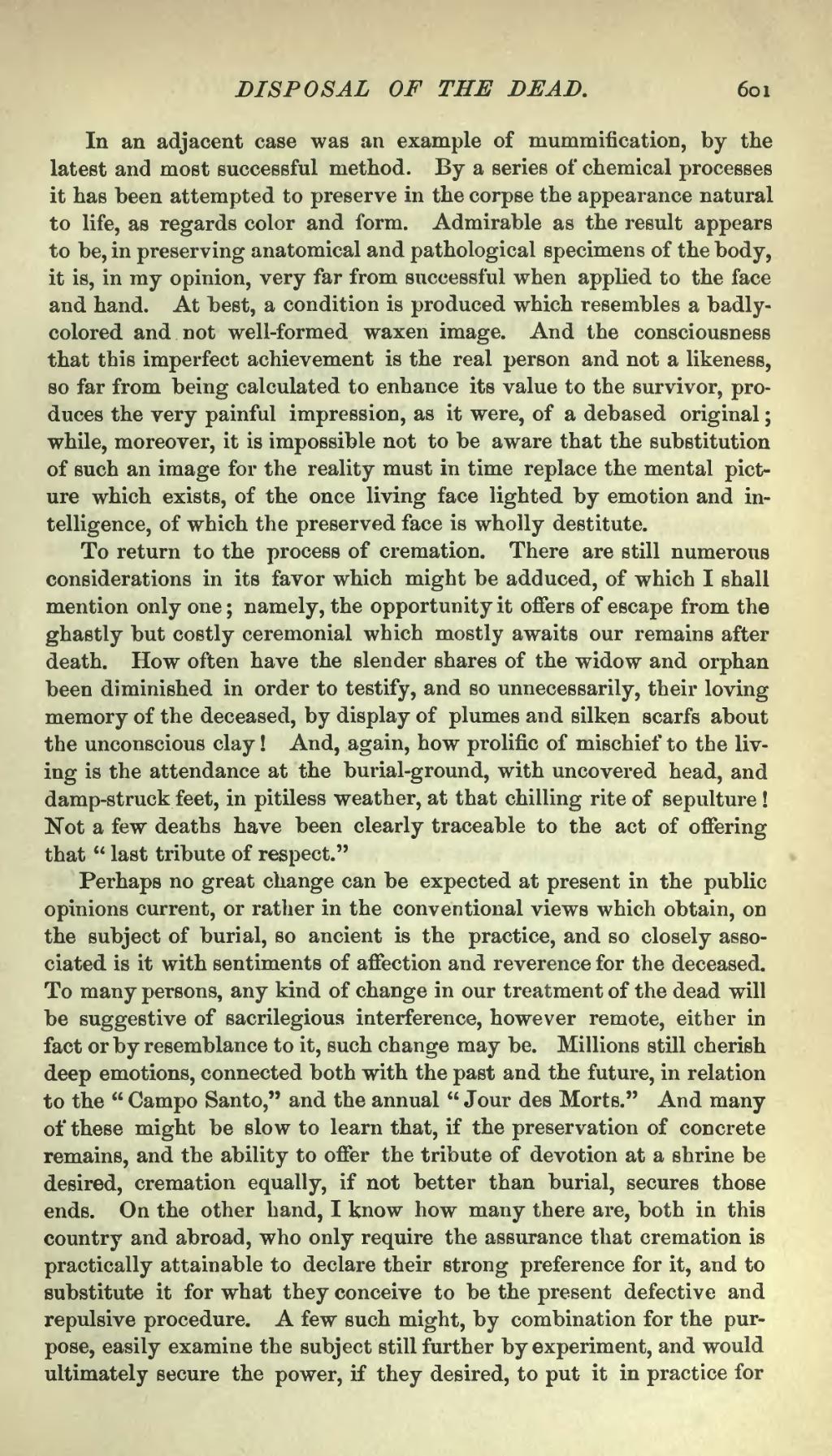In an adjacent case was an example of mummification, by the latest and most successful method. By a series of chemical processes it has been attempted to preserve in the corpse the appearance natural to life, as regards color and form. Admirable as the result appears to be, in preserving anatomical and pathological specimens of the body, it is, in my opinion, very far from successful when applied to the face and hand. At best, a condition is produced which resembles a badly-colored and not well-formed waxen image. And the consciousness that this imperfect achievement is the real person and not a likeness, so far from being calculated to enhance its value to the survivor, produces the very painful impression, as it were, of a debased original; while, moreover, it is impossible not to be aware that the substitution of such an image for the reality must in time replace the mental picture which exists, of the once living face lighted by emotion and intelligence, of which the preserved face is wholly destitute.
To return to the process of cremation. There are still numerous considerations in its favor which might be adduced, of which I shall mention only one; namely, the opportunity it offers of escape from the ghastly but costly ceremonial which mostly awaits our remains after death. How often have the slender shares of the widow and orphan been diminished in order to testify, and so unnecessarily, their loving memory of the deceased, by display of plumes and silken scarfs about the unconscious clay! And, again, how prolific of mischief to the living is the attendance at the burial-ground, with uncovered head, and damp-struck feet, in pitiless weather, at that chilling rite of sepulture! Not a few deaths have been clearly traceable to the act of offering that "last tribute of respect."
Perhaps no great change can be expected at present in the public opinions current, or rather in the conventional views which obtain, on the subject of burial, so ancient is the practice, and so closely associated is it with sentiments of affection and reverence for the deceased. To many persons, any kind of change in our treatment of the dead will be suggestive of sacrilegious interference, however remote, either in fact or by resemblance to it, such change may be. Millions still cherish deep emotions, connected both with the past and the future, in relation to the "Campo Santo," and the annual "Jour des Morts." And many of these might be slow to learn that, if the preservation of concrete remains, and the ability to offer the tribute of devotion at a shrine be desired, cremation equally, if not better than burial, secures those ends. On the other hand, I know how many there are, both in this country and abroad, who only require the assurance that cremation is practically attainable to declare their strong preference for it, and to substitute it for what they conceive to be the present defective and repulsive procedure. A few such might, by combination for the purpose, easily examine the subject still further by experiment, and would ultimately secure the power, if they desired, to put it in practice for
